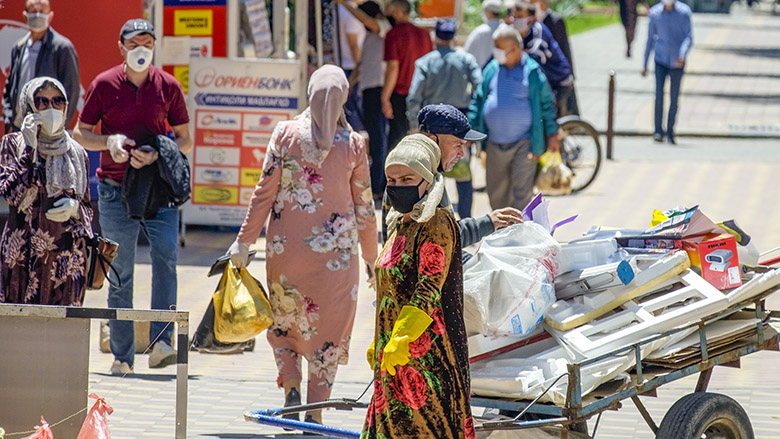Livelihoods
- Domestic employment sharply deteriorated in May. The share of households reporting that no member had worked in the preceding 7 days spiked from 20 percent in March to nearly 40 percent in May. The share of household heads reported as having worked in May fell by 16 percentage points over the same period. Nearly 63 percent of respondents report changes to the working conditions of members due to COVID-19, and about 8 percent of those who halted work were reported as “unlikely to resume”. The number of job postings on popular site somon.tj fell from January to May by more than 70 percent.
- The share of respondents reporting a deterioration in their family’s finances spiked by the largest amount since reporting began, from 8 percent in March to nearly 23 percent in May. The share expecting a further deterioration in the coming month also more than doubled. Households reporting that they have “no savings” rose from 29 percent in January to more than 41 percent in May 2020, and less than half say that they could pay for an emergency expense of 100 somoni (about $10). About 71 percent of respondents report being very concerned about the impact of COVID-19 on the economy and their livelihoods.
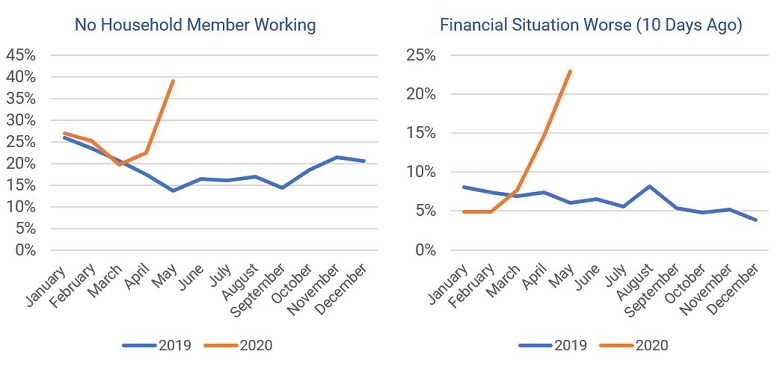
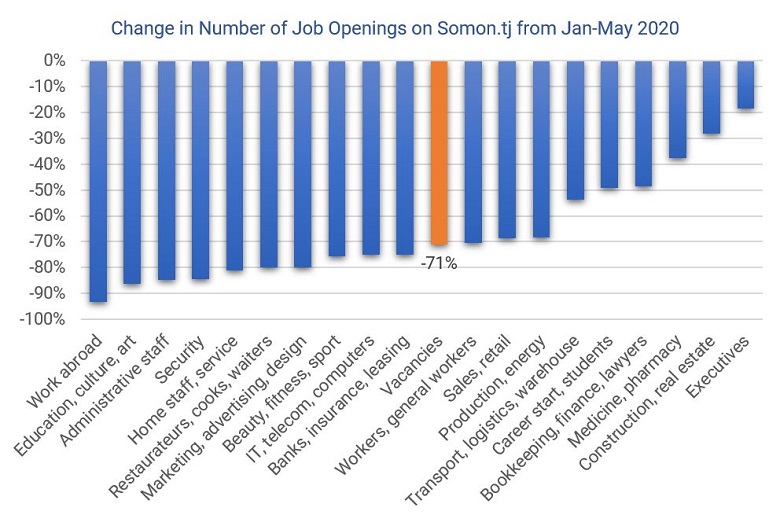
Migration and Remittances
- Remittance income fell dramatically in April but recovered some lost ground in May. More than 61 percent of recipient households reported a decline in remittances in April, the highest share ever recorded in the L2T survey and more than 39 pp higher than the same time last year. Conditional on receiving a remittance transfer, the average value fell by more than 37 percent between January and May 2020, after adjusting for inflation and exchange rate fluctuations. More than half of recipient households still expected additional declines in remittance income in May and June. The share of migrants sending remittances over the preceding 10 days fell 13 percentage points in April, but regained 5pp in May to about 19 percent. Rather than having fully lost employment arrangements, respondents commonly report short-term income loss among migrants.
- Tumbling remittances are expected to push the poverty rate higher. Poor households in Tajikistan depend much more on remittances than those better off. More than 80 percent of households that receive remittances reported that they primarily spend them on food and other basic necessities.
- Future migration expectations have evaporated – falling to about 2 percent of households, in comparison to more than 9 percent at the same time last year. Some migration expectations remain unrealistic. In the first quarter of the year, many people were still considering migration to Russia despite strict travel bans.
- The share of households with current migrants abroad remains quite high. About 35 percent of households provided details of at least one member currently abroad. As reported in international media, there have been very limited travel options organized to bring migrants home to Tajikistan.
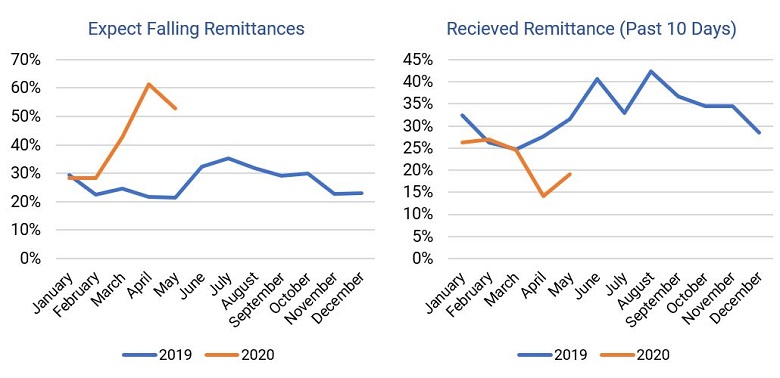
Food Security and Spending
- Reports of reduced food consumption rapidly increased to 41 percent of the population in May, far higher than the 24 percent recorded at the same time last year. Overall food security further deteriorated in May across a range of indicators, with rising shares reporting going hungry, reducing dietary diversity, and worries over obtaining enough food. Similar increases were seen in reduced ability to pay for utilities, and in coping mechanisms such as selling assets and reduced spending on medical care. However, this level of food insecurity is not unprecedented in Tajikistan – some relevant indicators rose to similar levels in 2019.
- About 10 percent of respondents reported goods locally out of stock in May. The most commonly reported items were food, followed by some medical supplies and masks. About 55 percent of people reported significantly changing their spending due to COVID-19, more than 90 percent of whom reported spending more than usual. About 25 percent of respondents report significantly stocking up on food.
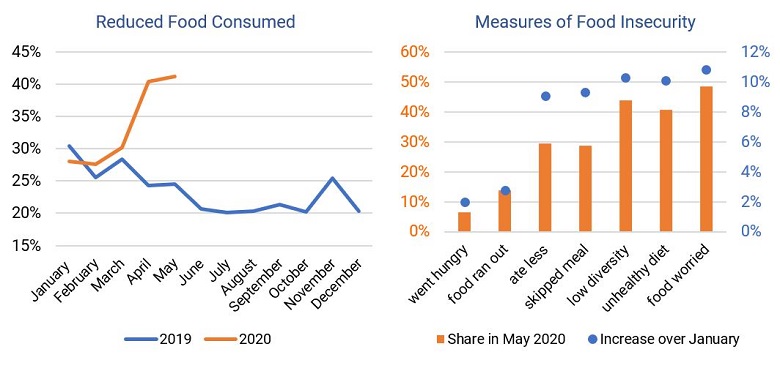
Knowledge, Education, and Behavior
- Respondents are very worried about the potential impacts of COVID-19. About 78 percent report being very concerned about the health of their family. About 28 percent of households reported having needed medical care in May, and among them, 17.5 percent report not having been able to obtain it.
- Though most people report changing their behavior in some way, the public in Tajikistan is much less informed about COVID-19 than in Uzbekistan. Only about 46 percent of respondents report being “very familiar” with what COVID-19 is. On average, more than half of respondents (52 percent) report that they have not received any official guidance on risk reduction from government over the preceding 7 days, and fewer have heard any such guidance from local officials. A remarkably higher share report reducing handshakes and greetings in May compared to the previous month. About 77 percent report reducing physical greetings, and 57 percent social distancing. On average, respondents in Tajikistan reported washing their hands less than in Uzbekistan, a median of 8 times per day in comparison to about 12 times.
- Television is by far the most common source of official information. Ninety two percent of respondents identify TV as a primary source of information. The second most common source of information is in person (from health providers etc.) listed by 33 percent of people, followed by SMS with about 25 percent listing it as a primary source. About 8 percent identify radio, with a similar share reporting social media.
- About a third of households reported that their children participated in educational activities following school closers. Among them, nearly all (94 percent) participated in televised educational activities. Among those who used alternative educational services, about 70 percent were either very or moderately satisfied. Few households report the use or availability of digital devices for educational activities.
- Most respondents report reduced travel in May. About 83 percent report having reduced travel to limit the risk of infection and 78 percent report reducing visits to friends and family. About 7.5 percent report a household member as having been to a gathering of 20 or more people.
